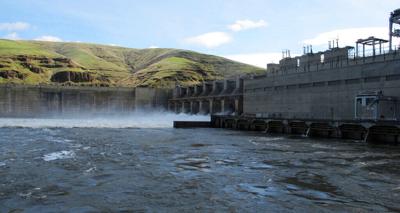(The Center Square) – For years the state of Washington has sought to increase the population of more than a dozen salmon subspecies classified as endangered. However, according to the most current update from the Governor’s Office only four of the 14 subspecies have seen improvement. This is despite increased spending on recovery efforts, including a 67% increase in grant program investments between 2019-2023.
A 2011 study estimated that more spending is needed, estimating that statewide cost of regional habitat-related work would require $4.7 billion. So far, just $1 billion, or 22%, of that amount has been invested. The 2023-25 state capital budget includes more than $800 million in additional funding for recovery efforts centered on fish passage projects, habitat restoration and riparian grant programs
However, Washington Policy Center Environmental Director Todd Myers argues that it’s time for Washington to change its approach in terms of both funding and policy-making. In a recent paper, he wrote that “increased funding will only be effective if it is accompanied by a commitment to reversing the trend toward politicizing spending, and instead using a science-based prioritization process by increasing funding for science, monitoring, and creating accountability for outcomes by putting those closest to recovery projects in the lead.”
A source of contention among many stakeholders are the primary causes of the declining salmon populations. A 2022 Washington State Academy of Sciences study found that while sea lions “have been implicated as a primary factor contributing to continued depressed populations of salmon in Washington State….(the) evidence does not support a definitive conclusion that pinnipeds are a primary cause of the lack of salmonid population recovery in these ecosystems.”
Others argue that the lower Snake River dams are preventing salmon from successfully returning to their respective habitats upstream and have called for breaching them as a solution. Among those advocating for their removal is Gov. Jay Inslee.
A 2016 Bonneville Power Administration estimate puts the cost of removing those dams at $1.3-$2.6 billion. However, a 2022 report by the Northwest RiverPartners found that replacing the electricity generated from those dams would cost $15 billion.
Myers argues that “the fight over the Snake River dams is the highest profile and most expensive example of silver-bullet thinking, but not the only one.”
The fate of the lower Snake River dams remains uncertain, with the Biden administration’s Council on Environmental Quality currently involved in litigation with the Army Corps of Engineers over control of the dams.
In a recent statement, Washington Rep. Dan Newhouse wrote that Congress alone has authority to breach the dams, a proposal he opposes. “The significance of the Snake River Dams cannot be overstated. They serve as the foundation for an array of essential functions that are integral to our communities and power our homes and businesses with clean, renewable, safe, and affordable energy.”
Among his recommendations is to allocate more of salmon recovery funding to local watersheds, which have the “advantage of local knowledge and accountability is more likely.”
In an email to The Center Square, Inslee’s Communications Director Mike Faulk wrote that Inslee’s 2021 salmon strategy update “align with regional recovery plan and tribal priorities, and elevate the urgency of climate change and orca recovery for Washington.”
“Washington has significantly increased salmon investments and the state’s process is locally based with regional recovery boards and local partners working closely with sovereign Tribes at the watershed scale,” Faulk wrote.
Another issue compounding recovery efforts is a federal court mandate requiring hundreds of fish barriers on land managed by the Washington Department of Transportation be removed by 2030. However, left out of the court mandate are fish barriers on local and county land having more of an impact to fish passage than those on WSDOT land.
“Opening upstream habitats and reducing stream temperatures are both worthwhile and help salmon,” Myers wrote. “Despite that, these types of projects may not be the best use of salmon-recovery funding and may not remove the key barriers and chokepoints in individual watersheds.”
In his paper, Myers also recommends further investment in the Salmon Recovery Funding Board, which is composed of five governor-appointed citizens and five state agencies directors. While state spending on salmon recovery has increased in recent years, the Salmon Recovery Funding Board’s budget was reduced by a third compared to the prior biennium.
The Salmon Recovery Funding Board is currently working on a draft review of the State Recreation and Conservation Office’s Watershed Restoration and Enhancement Plan. That plan includes 23 habitat projects “creating potentially measurable and meaningful ecological benefits for salmonids” and “improved channel complexity in salmon-bearing streams.” The board is currently seeking public comment on the draft review through Oct. 13.









